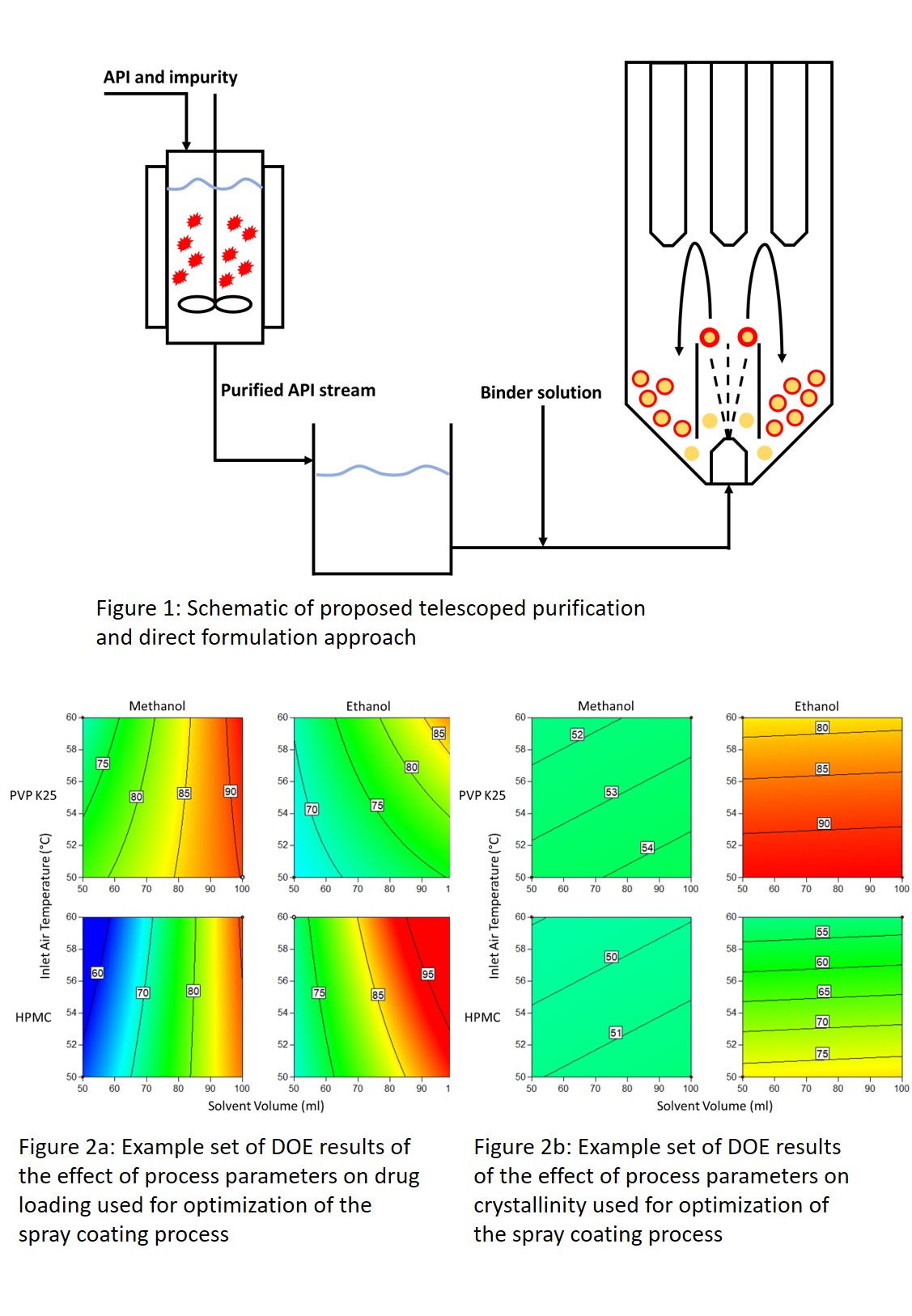2020 Virtual AIChE Annual Meeting
(542b) Integrated Continuous API Purification and Direct Formulation of Drug Products Via Confined Suspension Agitated Bed Crystallization and Fluidized Bed Coating
Authors
To this end a novel confined suspension agitated bed crystallization process that produces a purified API solution effluent has been applied to purify a model API with high purity and yield. The purified API solution from this process was then deposited onto microcrystalline cellulose (MCC) beads via fluidized bed spray coating. This process is shown schematically in Figure 1. Fluidized bed spray coating operations onto excipient carriers are capable creating final bulk powders with excellent flow properties in addition to incorporating, disintegrants, controlled release polymers and coatings enabling direct isolation of final highly engineered drug product intermediates ready for example capsule filing or direct compression in a DS facility.
As spray coating is a complex process with a large number of interconnected process parameters, a DOE based optimization approach was used to develop a robust process with regard to loading efficiency and the degree of drug crystallinity on the coated beads. A five-factor two-level fractional factorial study was produced to screen for the parameters with the most significant influence on the spray coating process. The mass of API sprayed was kept constant for each treatment and factors investigated were process temperature (50 to 60 °C), solvent volume (50 to 100 ml), binder mass (1 to 3 g), binder type (PVP or HPMC) and solvent type (methanol or ethanol). From this study, spraying conditions were identified that maximised both the amount of API loaded onto the beads and the degree of crystallinity and were then used to spray purified crystallization product directly onto the MCC beads (Figure 2). The product from the spray coater allows for both direct formulation of the product and for further processing and coating in order to mediate drug release. As both processes are easily scalable and the spray coating transferable to an analogous continuous operation, this work demonstrates a promising method for isolation free purification and direct formulation of Drug Products.
Acknowledgements:
This work is supported by the Irish Research Council Government of Ireland Postgraduate Ireland Postgraduate Research Scholarship under grant number (GOPI/2017/1980)
